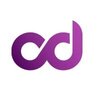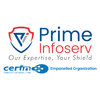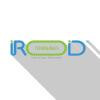Filter interviews by
Kreate Technologies Interview Questions and Answers
33 Interview questions
Echo and print are both used to output data in PHP, but echo is slightly faster and can take multiple parameters while print can only take one.
Echo is a language construct, while print is a function.
Echo does not return a value, while print returns 1.
Echo can take multiple parameters separated by commas, while print can only take one parameter.
Echo is slightly faster than print.
OOPS programming is a programming paradigm based on the concept of objects, which can contain data in the form of fields and code in the form of procedures.
OOPS stands for Object-Oriented Programming System
It focuses on creating objects that interact with each other to solve complex problems
Encapsulation, inheritance, polymorphism, and abstraction are key principles of OOPS
Example: Inheritance allows a class to in...
PHP code can be embedded in an HTML file using PHP opening and closing tags.
Use <?php ?> tags to enclose PHP code within an HTML file
Ensure that the file has a .php extension for the server to process PHP code
Example: <html><body><?php echo 'Hello World'; ?></body></html>
Yes, I have experience working on pre-sales efforts and cost estimation.
I have worked on creating proposals and estimates for potential clients
I have experience analyzing requirements and determining the effort needed for a project
I have collaborated with sales teams to provide accurate cost estimates
I have used tools and techniques such as cost-benefit analysis and risk assessment in pre-sales activities
The next step after requirement gathering is analyzing the gathered requirements to identify patterns, prioritize needs, and create a solution.
Analyze the gathered requirements to identify patterns and common themes
Prioritize the needs and requirements based on business goals and constraints
Create a solution design or proposal that addresses the identified requirements
Collaborate with stakeholders to validate the ...
Requirement elicitation techniques are methods used to gather and clarify requirements from stakeholders.
Interviews with stakeholders to understand their needs and expectations
Surveys and questionnaires to collect feedback from a larger group of stakeholders
Observations of current processes or systems to identify areas for improvement
Prototyping to visualize requirements and gather feedback early in the process
Bra...
Requirements should be prioritized based on business value, impact on stakeholders, and feasibility.
Identify and prioritize requirements that align with the organization's strategic goals.
Consider the impact on stakeholders and prioritize requirements that address their needs.
Assess the feasibility of implementing each requirement and prioritize those that are achievable within constraints.
Use techniques like MoSC...
RTM metrics refer to the metrics used to track and measure the requirements traceability matrix.
RTM metrics help in tracking the progress of requirements throughout the project lifecycle.
They measure the coverage of requirements, identify gaps, and ensure all requirements are met.
Examples of RTM metrics include requirement status (e.g. implemented, in progress, pending), requirement source, and requirement priorit...
A project initiation plan is a document that outlines the objectives, scope, and deliverables of a project.
Defines the purpose and goals of the project
Identifies key stakeholders and their roles
Outlines the project scope and constraints
Includes a high-level timeline and budget estimate
Provides a roadmap for project execution
Alternate flow of Use Cases refers to scenarios in which the main flow of a use case is deviated due to certain conditions or exceptions.
Alternate flow describes deviations from the main flow of a use case
It represents different paths that a use case can take based on conditions or exceptions
These alternate flows are usually documented to ensure all possible scenarios are considered
Examples include error handling,...
Kreate Technologies Interview Experiences
17 interviews found
The test went good with good logical questions
(3 Questions)
- Q1. They asked about the python frameworks related
- Q2. In this they about the flask and Django questions
- Q3. They asked about the Cloud related question API related questions.
(1 Question)
- Q1. Related to the discussion on my location
Interview Preparation Tips
I applied via Naukri.com and was interviewed in Sep 2024. There were 2 interview rounds.
Test Paper Task, which is to be given in a Word Document.
1. WireFraming
2. User Story Writing
3. Use Case
4. Sequence Diagram
(19 Questions)
- Q1. Education Background and Work Experience
- Q2. How Educational Background Helped in IT Industry
- Ans.
Educational background in IT industry provides foundational knowledge, skills, and problem-solving abilities.
Educational background in computer science or related field helps in understanding technical concepts and languages used in IT industry.
Analytical and critical thinking skills acquired through education are essential for analyzing data and solving complex problems in IT projects.
Project management and communicat...
- Q3. 4 Requirement Development Component required in Req. gathering phases
- Ans.
Requirement development components in requirement gathering phases
Stakeholder analysis
Interviews with stakeholders
Document analysis
Observations
Prototyping
Brainstorming sessions
- Q4. What are Requirement Elicitation technique
- Ans.
Requirement elicitation techniques are methods used to gather and clarify requirements from stakeholders.
Interviews with stakeholders to understand their needs and expectations
Surveys and questionnaires to collect feedback from a larger group of stakeholders
Observations of current processes or systems to identify areas for improvement
Prototyping to visualize requirements and gather feedback early in the process
Brainsto...
- Q5. What is the next step after requirement gathering
- Ans.
The next step after requirement gathering is analyzing the gathered requirements to identify patterns, prioritize needs, and create a solution.
Analyze the gathered requirements to identify patterns and common themes
Prioritize the needs and requirements based on business goals and constraints
Create a solution design or proposal that addresses the identified requirements
Collaborate with stakeholders to validate the propo...
- Q6. Difference between Validation & Verification
- Ans.
Validation ensures the product meets the customer's requirements, while verification ensures the product is built correctly.
Validation is checking if the right product is being built, while verification is checking if the product is being built right.
Validation involves evaluating the product against customer requirements, while verification involves checking the product against specifications.
Validation is subjective ...
- Q7. What is [project initiation plan
- Ans.
A project initiation plan is a document that outlines the objectives, scope, and deliverables of a project.
Defines the purpose and goals of the project
Identifies key stakeholders and their roles
Outlines the project scope and constraints
Includes a high-level timeline and budget estimate
Provides a roadmap for project execution
- Q8. Roles of different Stakeholders in the Business Analysis process
- Ans.
Stakeholders in business analysis include project sponsors, end users, developers, and testers.
Project sponsors provide funding and support for the project.
End users provide input on requirements and usability.
Developers implement the solutions based on requirements.
Testers ensure the quality of the final product.
Other stakeholders may include managers, customers, and regulatory bodies.
- Q9. What is RACI metrics
- Ans.
RACI metrics are used to define roles and responsibilities within a project or organization.
RACI stands for Responsible, Accountable, Consulted, and Informed
It helps clarify who is responsible for what tasks and decisions
Example: R - John is responsible for data analysis, A - Sarah is accountable for project success, C - Mark is consulted for technical expertise, I - Emily is informed of project updates
- Q10. What is RTM metrics
- Ans.
RTM metrics refer to the metrics used to track and measure the requirements traceability matrix.
RTM metrics help in tracking the progress of requirements throughout the project lifecycle.
They measure the coverage of requirements, identify gaps, and ensure all requirements are met.
Examples of RTM metrics include requirement status (e.g. implemented, in progress, pending), requirement source, and requirement priority.
- Q11. What is the MoSCoW matrix
- Ans.
MoSCoW matrix is a prioritization technique used in project management to categorize requirements into Must have, Should have, Could have, and Won't have.
MoSCoW stands for Must have, Should have, Could have, and Won't have
Must have - essential requirements that are critical for project success
Should have - important requirements that are high priority but not critical
Could have - desirable requirements that are nice to...
- Q12. How to prioritize the requirement
- Ans.
Requirements should be prioritized based on business value, impact on stakeholders, and feasibility.
Identify and prioritize requirements that align with the organization's strategic goals.
Consider the impact on stakeholders and prioritize requirements that address their needs.
Assess the feasibility of implementing each requirement and prioritize those that are achievable within constraints.
Use techniques like MoSCoW pr...
- Q13. What are the use cases
- Ans.
Use cases are specific scenarios where a product or service can be used to solve a particular problem or achieve a specific goal.
Identifying business needs and requirements
Improving processes and workflows
Enhancing decision-making through data analysis
Optimizing resource allocation
Increasing customer satisfaction
Reducing costs and increasing efficiency
- Q14. What does it mean by 'Alternate flow of Use Cases'
- Ans.
Alternate flow of Use Cases refers to scenarios in which the main flow of a use case is deviated due to certain conditions or exceptions.
Alternate flow describes deviations from the main flow of a use case
It represents different paths that a use case can take based on conditions or exceptions
These alternate flows are usually documented to ensure all possible scenarios are considered
Examples include error handling, vali...
- Q15. How JIRA is used in project management
- Ans.
JIRA is a project management tool used for tracking tasks, issues, and progress in projects.
JIRA allows users to create and assign tasks to team members
It provides a centralized platform for tracking project progress and deadlines
Users can create custom workflows and dashboards to visualize project status
JIRA integrates with other tools like Confluence and Bitbucket for seamless collaboration
- Q16. Ever Worked on pre-sales? (Effort & Cost estimation)
- Ans.
Yes, I have experience working on pre-sales efforts and cost estimation.
I have worked on creating proposals and estimates for potential clients
I have experience analyzing requirements and determining the effort needed for a project
I have collaborated with sales teams to provide accurate cost estimates
I have used tools and techniques such as cost-benefit analysis and risk assessment in pre-sales activities
- Q17. Explain the previous project where you worked
- Ans.
Implemented a data analytics solution for a retail company to optimize inventory management
Analyzed historical sales data to identify trends and patterns
Developed predictive models to forecast demand and optimize inventory levels
Collaborated with cross-functional teams to implement the solution and train end users
- Q18. What is Business Process Modeling
- Ans.
Business Process Modeling is the visual representation of a business process to analyze, improve, and optimize its efficiency.
It involves creating diagrams or flowcharts to illustrate the steps, activities, and decisions involved in a business process.
Business Process Modeling helps in identifying bottlenecks, redundancies, and inefficiencies in a process.
It can be used to simulate different scenarios and analyze the i...
- Q19. This company is in the Power Sector, How will you work in this new domain?
- Ans.
I will leverage my analytical skills to understand the unique challenges and opportunities in the Power Sector and collaborate with stakeholders to drive effective solutions.
Conduct thorough research on the Power Sector to understand industry trends, regulations, and key players
Collaborate with internal teams and stakeholders to gather requirements and identify pain points
Utilize data analysis and modeling techniques t...
Interview Preparation Tips
Skills evaluated in this interview
I appeared for an interview in Apr 2025, where I was asked the following questions.
- Q1. Technical questions
- Q2. HR Round with the behavior and consistency round
- Q3. FRAMEWORKS OF PYTHON coding test
- Ans.
Python frameworks streamline web development, offering tools and libraries for efficient coding and rapid application deployment.
Django: A high-level framework that promotes rapid development and clean, pragmatic design. Example: Building a blog application with Django's ORM.
Flask: A micro-framework that is lightweight and easy to use, ideal for small applications. Example: Creating a RESTful API with Flask.
Pyramid: A ...
Interview Preparation Tips
I appeared for an interview in Mar 2025, where I was asked the following questions.
- Q1. Technical questions
- Q2. ON python frameworks
- Q3. HR round for the job consistency
Interview Preparation Tips
I appeared for an interview in Mar 2025, where I was asked the following questions.
- Q1. Technical questions
- Q2. HR round related to Company
- Q3. FRAMEWORKS OF PYTHON
- Ans.
Python frameworks streamline web development, offering tools and libraries for building robust applications efficiently.
Django: A high-level framework that encourages rapid development and clean, pragmatic design, ideal for building complex web applications.
Flask: A lightweight WSGI web application framework that is easy to use and flexible, perfect for small to medium-sized applications.
Pyramid: A flexible framework t...
Interview Preparation Tips
Wireframe, casestudy
(2 Questions)
- Q1. Previous experience
- Q2. Project handelling
I appeared for an interview in Mar 2024.
(2 Questions)
- Q1. What is the diffrences between methlogies.
- Ans.
Different methodologies in business analysis include Agile, Waterfall, and Lean.
Agile focuses on flexibility and collaboration, with iterative development cycles.
Waterfall follows a linear approach with distinct phases like requirements, design, development, testing, and deployment.
Lean aims to eliminate waste and improve efficiency by continuously improving processes.
Each methodology has its own strengths and weakness...
- Q2. Have you worked with govt. client.
- Ans.
Yes, I have worked with government clients in the past.
I have experience working with government agencies on various projects.
I am familiar with the unique requirements and processes involved in government projects.
I have successfully delivered solutions that met the specific needs of government clients.
For example, I worked on a project for a government agency to improve their data analysis capabilities.
Interview Preparation Tips
1. noramal php question
Php function basic codeing
Interview Preparation Tips
I applied via LinkedIn and was interviewed before Jun 2023. There were 2 interview rounds.
(15 Questions)
- Q1. Oops Concept in c#
- Ans.
Oops concept in C# refers to Object-Oriented Programming principles like inheritance, encapsulation, polymorphism, and abstraction.
Inheritance allows a class to inherit properties and behavior from another class.
Encapsulation hides the internal state of an object and only exposes necessary information.
Polymorphism allows objects of different classes to be treated as objects of a common superclass.
Abstraction focuses on...
- Q2. Manage and unmanaged code
- Q3. Dependency injection
- Q4. Filter and its type
- Ans.
A filter is a tool used to select specific data from a larger set based on certain criteria.
Filters can be used in various programming languages and databases to narrow down results.
Types of filters include text filters, numeric filters, date filters, and custom filters.
Examples of filters include WHERE clause in SQL, filter() function in Python, and filter() method in JavaScript.
- Q5. View in sql server
- Ans.
A view in SQL Server is a virtual table that contains the result set of a SELECT statement.
Views are used to simplify complex queries by storing them as a virtual table.
Views can be used to restrict access to specific columns or rows of a table.
Views can be created using the CREATE VIEW statement.
Example: CREATE VIEW vwEmployee AS SELECT FirstName, LastName FROM Employees;
- Q6. Primary key vs unique key
- Ans.
Primary key uniquely identifies a record in a table, while unique key ensures uniqueness but allows null values.
Primary key enforces uniqueness and not null constraint on a column
Primary key can consist of multiple columns
Unique key enforces uniqueness but allows null values
Unique key can be applied to multiple columns as well
- Q7. Procedure vs function
- Ans.
Procedures are a set of instructions that perform a specific task, while functions return a value after performing a task.
Procedures do not return a value, while functions do.
Functions can be called within expressions, while procedures cannot.
Functions are more versatile and reusable compared to procedures.
- Q8. Trigger in sql server
- Ans.
A trigger in SQL Server is a special type of stored procedure that automatically executes when certain events occur in a database.
Triggers can be used to enforce business rules, audit changes, or replicate data.
There are two main types of triggers in SQL Server: DML triggers and DDL triggers.
DML triggers fire in response to data manipulation language (DML) events like INSERT, UPDATE, and DELETE.
DDL triggers fire in res...
- Q9. Interface in c#
- Ans.
Interface in C# is a reference type that defines a contract for classes to implement certain methods and properties.
Interfaces cannot have implementation, only method signatures and properties.
Classes can implement multiple interfaces in C#.
Interfaces are used to achieve abstraction and multiple inheritance in C#.
Example: public interface IShape { void Draw(); }
Example: public class Circle : IShape { public void Draw()...
- Q10. Abstract class vs interface
- Ans.
Abstract class is a class that can have both abstract and non-abstract methods, while interface is a contract that defines methods that must be implemented by a class.
Abstract class can have constructor, fields, and methods, while interface cannot have any implementation.
A class can implement multiple interfaces but can only inherit from one abstract class.
Abstract classes are used when some common functionality needs ...
- Q11. Partial view in.det
- Ans.
Partial view in ASP.NET MVC allows reusing common UI elements across multiple views.
Partial views are like reusable components that can be included in multiple views
They help in reducing code duplication and improving maintainability
Partial views are rendered using Html.Partial or Html.RenderPartial methods
- Q12. Method overloading vs overriding
- Ans.
Method overloading is having multiple methods in the same class with the same name but different parameters. Method overriding is redefining a method in a subclass with the same name and parameters as in the superclass.
Method overloading involves multiple methods with the same name but different parameters.
Method overriding involves redefining a method in a subclass with the same name and parameters as in the superclas...
- Q13. Union vs union all
- Ans.
Union combines and removes duplicates, while union all combines all rows including duplicates.
Union removes duplicates, while union all includes duplicates.
Union is slower as it has to remove duplicates, while union all is faster.
Use union when you want to remove duplicates, use union all when duplicates are acceptable.
- Q14. Foreign key In sql
- Ans.
Foreign key in SQL is a field in a table that links to a primary key in another table, enforcing referential integrity.
Foreign key constraints ensure data consistency between related tables
Foreign key values must exist in the referenced table's primary key column
Foreign key can be used to establish relationships between tables
- Q15. Constructor in c#
- Ans.
Constructor in C# is a special type of method that is automatically called when an instance of a class is created.
Constructors have the same name as the class and do not have a return type.
They can be used to initialize the data members of the class.
Constructors can be overloaded to have multiple versions with different parameters.
Example: public class Person { public Person(string name) { this.Name = name; } }
(2 Questions)
- Q1. Tell me about your project
- Q2. Salary discussion
Interview Preparation Tips
Skills evaluated in this interview
(1 Question)
- Q1. Why should we hire you
Top trending discussions






Kreate Technologies Interview FAQs
The duration of Kreate Technologies interview process can vary, but typically it takes about less than 2 weeks to complete.
Tell us how to improve this page.
Kreate Technologies Interviews By Designations
- Kreate Technologies Business Analyst Interview Questions
- Kreate Technologies Software Developer Interview Questions
- Kreate Technologies Data Scientist Interview Questions
- Kreate Technologies Python and Django Developer Interview Questions
- Kreate Technologies Backend Developer Interview Questions
- Kreate Technologies Web Developer Interview Questions
- Kreate Technologies Python Software Developer Interview Questions
- Kreate Technologies Database Developer Interview Questions
- Show more
Interview Questions for Popular Designations
- Business Analyst Interview Questions
- Executive Interview Questions
- Software Engineer Interview Questions
- Software Developer Interview Questions
- Sales Executive Interview Questions
- Graduate Engineer Trainee (Get) Interview Questions
- Associate Software Engineer Interview Questions
- Accountant Interview Questions
- Show more
Overall Interview Experience Rating
based on 20 interview experiences
Difficulty level
Duration
Interview Questions from Similar Companies
Kreate Technologies Reviews and Ratings
based on 74 reviews
Rating in categories
|
Software Developer
68
salaries
| ₹3 L/yr - ₹8.4 L/yr |
|
Junior Software Developer
39
salaries
| ₹1.9 L/yr - ₹5.4 L/yr |
|
Senior Software Developer
32
salaries
| ₹8.2 L/yr - ₹15 L/yr |
|
Business Analyst
15
salaries
| ₹4.4 L/yr - ₹8.5 L/yr |
|
Senior Software Engineer
11
salaries
| ₹6 L/yr - ₹13 L/yr |

AARA Technologies

Coditro

Value Creatives
Shvintech
- Home >
- Interviews >
- Kreate Technologies Interview Questions













